Marijuana legalization is spreading. Medical marijuana use is now legal in the majority of states, allowing patients access to the substance once they have a recommendation from a licensed physician. However, it’s no secret that weed is expensive.
Some of these states allow users to grow their own pot at home rather than buying from a state-run dispensary. This can save them money if they are talented cultivators.
And then there are other states in which recreational marijuana is legal. In fact, Colorado, Alaska, Massachusetts, and Maine make no distinction between medicinal grows and legal grows. In other words, any adult of legal age can cultivate marijuana in their home, but there are limits as to how many plants you can have.
If you want to try your hand at cannabis growing, check the laws in your state beforehand. Then, it’s vital to read up on all this related to cultivating cannabis so you can have a successful grow. In this article, we look at the seven steps of cannabis growing and harvesting to help you get the most out of your grow op.
1. Germination: Between 24-Hours and 2 Weeks
Plants use sexual reproduction in order to carry on the species into the next generation. There are male and female cannabis plants which must reproduce. Sometimes, hermaphrodite plants exist, but these are not something you should concern yourself about right now.
Growers want to use female plants because they are the only ones that produce a massive quantity of trichomes. Trichomes are white crystals packed full of cannabinoids like CBD and THC. Male plants are virtually useless, but they could end up contaminating your crop if you keep them around.
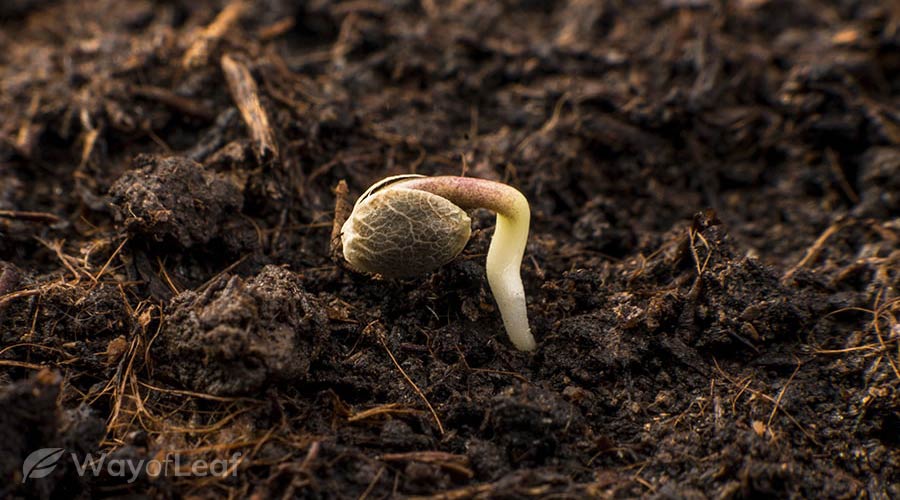
As a result, you should look out for feminized seeds. Seed banks often sell this type, so they shouldn’t be too hard to find. If you use regular seeds, there is a 50/50 chance you will get male or female plants; with feminized seeds, all your plants will be females.
Once you have your feminized seeds, it’s time to germinate them. Each seed contains a cannabis plant just waiting to emerge, but it will need some tender love and care to do so. Seeds need heat and water to sprout; otherwise, they will remain dormant.
There are a few ways to germinate a cannabis seed, but most people use the paper towel method. It’s super easy and won’t take long at all. Here’s what to do:
- Soak four paper towels in water and place two of them on a plate. Space out the cannabis seeds on top of the paper towel.
- Place the other two paper towels on another plate. Use this plate to cover the other one so the cannabis seeds are inside.
- Keep the room temperature somewhere between 70 and 90˚F, and keep checking to make sure the paper towels are still wet.
Check on your seeds every so often. Eventually, a white taproot will sprout from the seeds. Germination can take anywhere between 24 hours and seven days, so be patient!
When the taproot has emerged, you can transfer the seeds to a growing medium. Depending on the strain, your growing experience, and your budget, you might want to use a different growing medium. Some people prefer a hydroponics setup, but first-time cultivators are likely to prefer soil.
When handling the seed, be extremely careful. Avoid touching the taproot as it is fragile and may break. At first, you can transplant the seed into 2-inch pots of soil.
Congratulations! The seed is ready to start growing.
2. Seedling Stage: 2-3 Weeks
Once the germinated seeds are planted, they will begin growing. A little cannabis plant will sprout from the soil and begin to develop familiar characteristics. During the seedling stage, it will produce two leaves that open outward from the stem to start receiving sunlight. Next, its trademark cannabis leaves will begin to sprout at the top of the plant as it enters its first growth cycle.
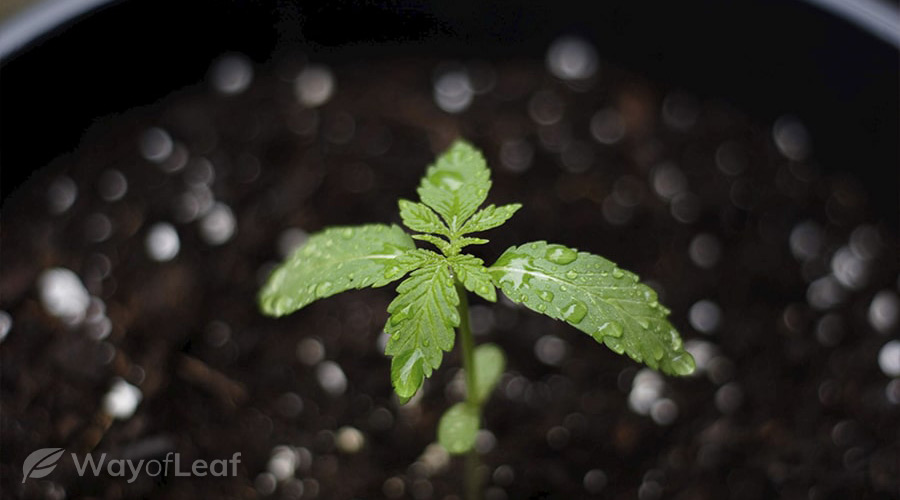
During this time, the plant will also start developing its root system. While this is happening, it is officially a seedling. Pot plants can stay in the seedling stage for 2-3 weeks, but this stage may last for up to 6 weeks in rarer cases. The length of time can vary depending on the strain you’re growing and a few environmental factors.
As a general rule, the seedling should be kept at 77˚F with a humidity of around 60%. Often, marijuana prefers a light cycle of 18-hours of white light per day once the leaves have emerged. You should be using nitrogen-rich fertilizer at this point. Remember that all this is a rule of thumb. To get the best results, read up on the requirements of your particular strain.
3. Vegetative Stage: 3-8 Weeks
By the time the vegetative stage comes around, you should have transferred the plants to larger pots. At this point, they will be growing rapidly as they take on more nutrients and carbon dioxide. This allows them to develop leaves and take shape very quickly.
Vertical growth will take place now, with plants growing taller. We have heard of people’s plants gaining 2 inches in height in just 24 hours!
You will now be able to tell what kind of plants you’re growing as they show their defining characteristics. Sativas will become taller and narrower, whereas indicas will appear short and bushy with dense foliage.
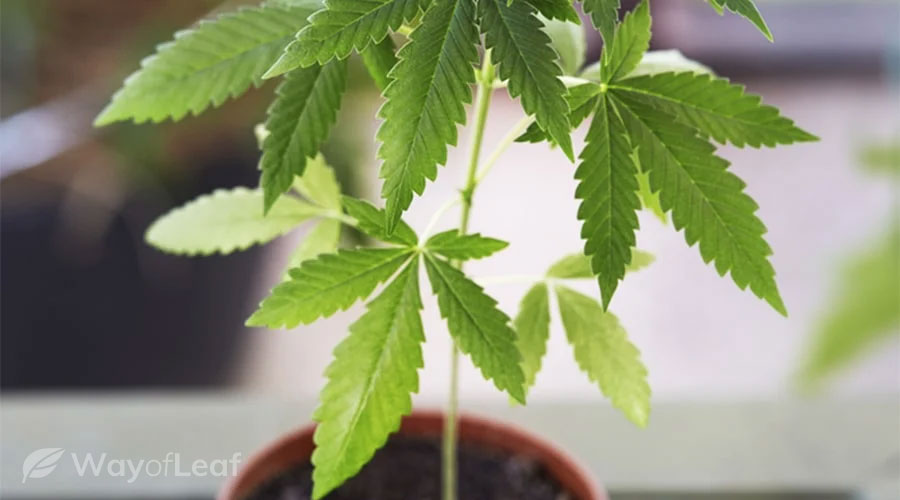
Furthermore, the end of the vegetative stage provides a vital opportunity to look for males in your crop. As plants leave this stage, the females will start developing two white pistils, where males will grow pollen sacs. If you see these sacs, remove the plant from the vicinity before it pollinates the females and ruins your harvest.
During the vegetative stage, the general rule is to keep the temperature between 68 and 77˚F, and the humidity between 50% and 70%. Once again, nitrogen is the essential nutrient, but you can also increase levels of other key nutrients in the feed. The plants will need 16-24 hours of sunlight.
4. Flowering Stage: 6-8 Weeks (Most Important Stage!)
The flowering stage is the last stage of growth, and it is the most crucial for you as a cultivator. You can transition plants into the flowering stage by reducing their light exposure. A 12-12 cycle (12 hours of light and 12 hours of darkness) is ideal.
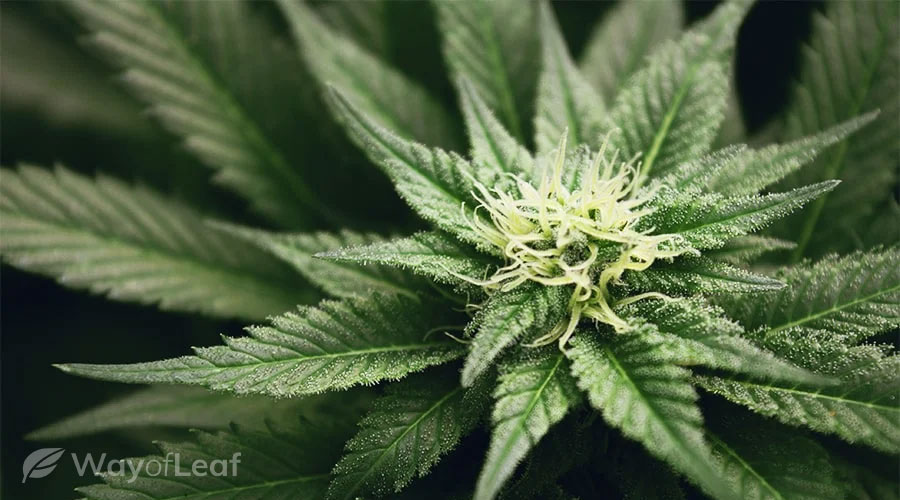
When the plants flower, they begin to produce a sticky resin on the leaves. Trichomes will develop, too. This means that the cannabinoids in the plant are developing nicely. The final potency of the cannabis will depend on how long it spends in the flowering stage.
At this point, you should keep the temperature somewhere between 68 and 77˚F, with the humidity at around 50%. You can stop giving the plant nitrogen now, but up the intake of potassium and phosphorus.
WAYOFLEAF’S CHOICE – Homegrown CannabisCo
Homegrown CannabisCo are the masters when it comes to seeds. Offering a massive variety of cannabis seeds that are well categorized, not only does this company create a resource for superb quality options including feminized seeds, it also provides extensive growing information for those looking for some support along their journey.
5. When to Harvest Marijuana
Now comes the tricky part: Figuring out when is the right time to harvest! You will have to keep a close eye on your plants to determine when it’s the right time to reap them. Your timing can affect the smell, taste, weight, and potency of the final product.
A good trick is to look closely at the pistils. When they begin to turn brown and the leaves start to yellow, now is the time to harvest. Generally, experts say you should harvest the plants when 70-90% of the pistils have browned. If the pistils are entirely brown, the marijuana may be ‘overripe’ – it won’t taste good, and its effects will be less pleasant.
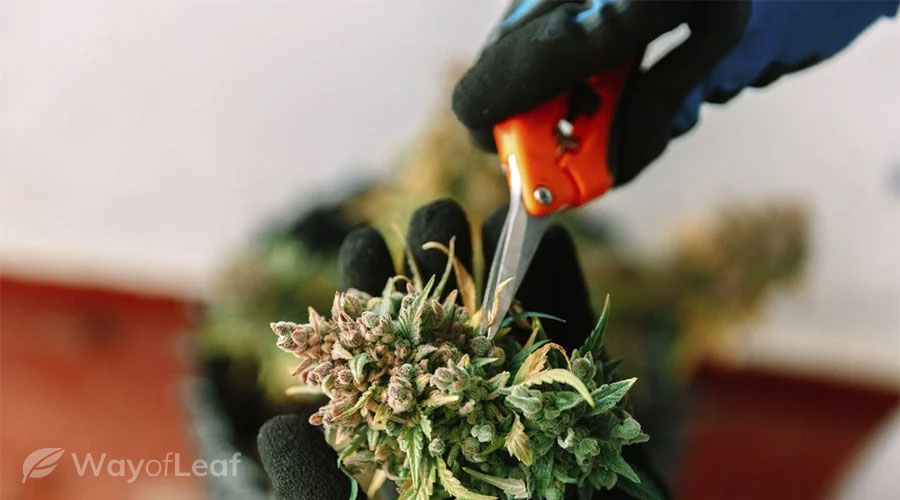
If the plant’s stem swells, it stops producing calyxes, and the yellow leaves fall off, then it’s too late. The cannabis is basically useless at this point.
Harvesting early is better than harvesting too late. The weed won’t be as potent, but you will still get something out of it.
6. Pruning Your Marijuana
After cutting down the plants, it’s time to prune them. This process ensures you will have rounded and smokable bud. You can perform wet or dry pruning. The general consensus is that the former method is easier. When the plants are dry, the leaves curl in on themselves, and it’s harder to perform the task at hand.
Invest in some delicate scissors – not the same ones you used to cut the plants down. It’s also a good idea to grab a chair because you could be here for a while! Wet pruning will also require gardening gloves because the plants will be sticky.
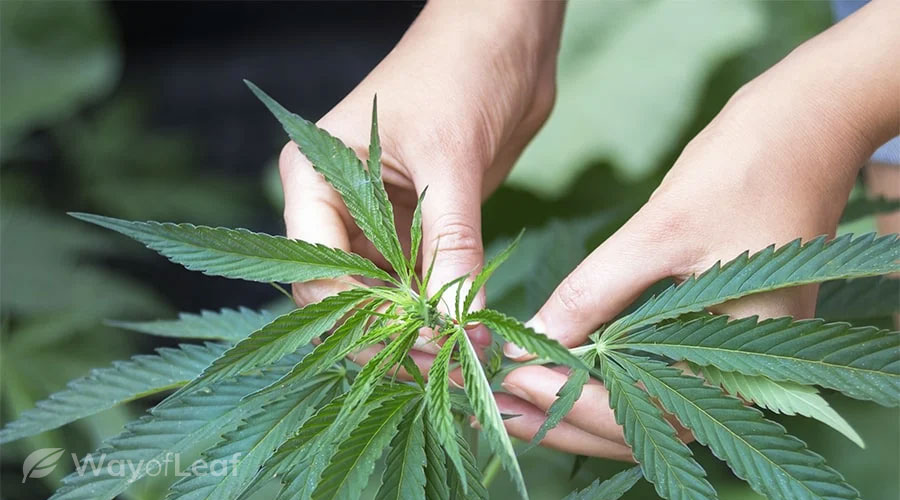
Pick the fan leaves off the buds and trim off the sugar leaves. You can use these leaves for edibles or throw them away. It’s also a good idea to collect the resin that accumulates on your gloves to use for dabs—it’s pretty potent stuff!
Once pruned, your buds are ready to be dried and cured. And then your work is complete!
7. Preparing for Next Season’s Cycle
Once you have completed your first growing cycle, you will be rewarded with a potent, delicious bud. So what happens now?
If you’re planning on cultivating your own weed continuously, you’re going to need some more seeds. We mentioned removing the males from your cannabis crop, and this means that your females won’t be pollinated and won’t be producing seeds. As a result, it’s unlikely that you will have your own seeds to work with.
One option is to buy more seeds from a seed bank. This way, you can keep buying and trying different strains.
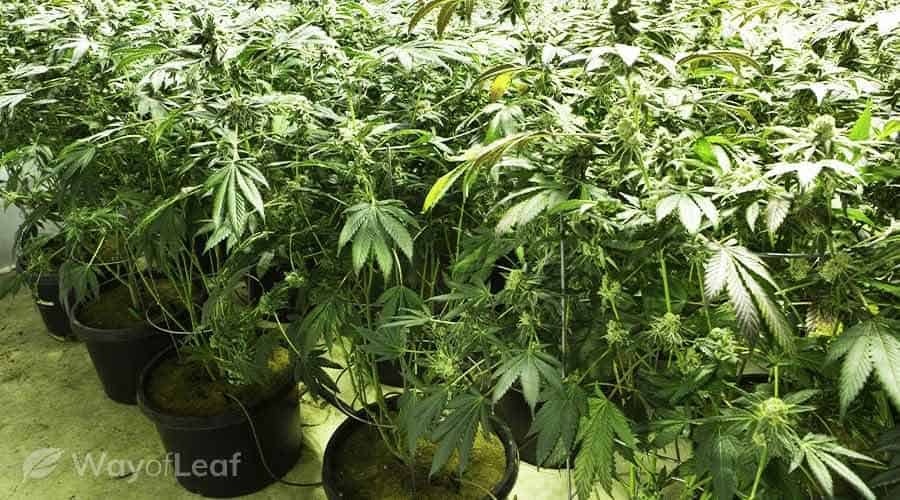
However, some growers prefer to use cloning. All you need to do is cut a branch of at least four inches from the most productive plant in your crop and plant it into a rooting solution. The plant that grows will be genetically identical, making the growing process predictable and easy. It does mean that you get the same thing every time, though, which can get a bit repetitive.
Final Thoughts: Growing Your Cannabis Through 7 Stages
Using your own home-grown Mary Jane can be very rewarding. If you’re a cannabis user with a green thumb, then we recommend giving it a go at least once. You never know, you might find your new favorite hobby! Once you get the hang of things, you can start growing more challenging and exciting strains.
Before you start, though, it’s crucial to find out the laws in your locality. Growing weed in a state where it’s illegal can carry hefty penalties, so it’s just not worth it! Stick to the laws in your state, and you will find the experience much more pleasant.


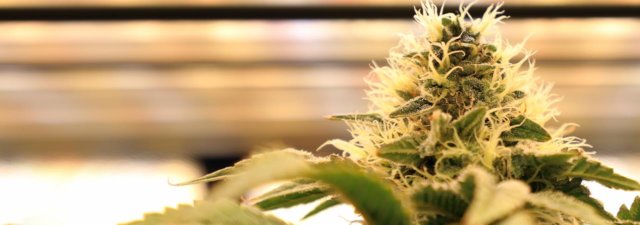


![8 Tips for Growing Master Kush Marijuana [Grower’s Guide]](https://wayofleaf.com/wp-content/uploads/2019/01/growing-master-kush-marijuana-640x225.jpg)
![Cannabis Growing During Different Seasons [Guide]](https://wayofleaf.com/wp-content/uploads/2018/12/cannabis-and-the-four-seasons-640x225.jpg)
![8 Tips for Growing Afghan Kush Marijuana [Grower’s Guide]](https://wayofleaf.com/wp-content/uploads/2018/12/tips-for-growing-afghan-kush-marijuana-growers-guide-640x225.jpg)


![Growing White Widow Cannabis [The Grower’s Guide]](https://wayofleaf.com/wp-content/uploads/2018/09/wol_1920x450-13-640x225.jpg)

